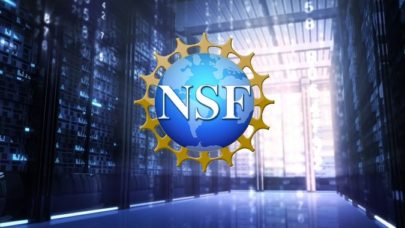
SC23 BOF: Inclusivity Progress and Challenges
November 21, 2023
New to SC23 was a series of talks on Inclusivity topics. Sponsored by the Inclusivity Committee and open to all conference attendees, these 90-minute birds-of-a Read more…

NCSA’s Delta System Enters Full Production
October 5, 2022
In June 2020, the NSF awarded the National Center for Supercomputing Applications (NCSA) $10 million for its post-Blue Waters “Delta” supercomputer. Now, th Read more…

Jetstream2 Cloud HPC System Enters Production
September 15, 2022
Jetstream2, a collaborative cloud HPC system spread across five institutions, has entered full production following an early operations phase that began earlier Read more…

A Farewell to XSEDE: A Retrospective & Introduction to the ACCESS Program
July 22, 2022
John Towns, principal investigator of the Extreme Science and Engineering Discovery Environment (XSEDE), gave an overview of the soon-to-complete NSF-funded cyb Read more…

Testing the Cloud: Assuring Availability
August 16, 2011
The ability for enterprises large and small to centralize and outsource increasingly complex IT infrastructure, while at the same time consuming cloud-based IT services on an on-demand basis, promises to transform the economics of doing business. Read more…

- Click Here for More Headlines

Whitepaper
Transforming Industrial and Automotive Manufacturing
In this era, expansion in digital infrastructure capacity is inevitable. Parallel to this, climate change consciousness is also rising, making sustainability a mandatory part of the organization’s functioning. As computing workloads such as AI and HPC continue to surge, so does the energy consumption, posing environmental woes. IT departments within organizations have a crucial role in combating this challenge. They can significantly drive sustainable practices by influencing newer technologies and process adoption that aid in mitigating the effects of climate change.
While buying more sustainable IT solutions is an option, partnering with IT solutions providers, such and Lenovo and Intel, who are committed to sustainability and aiding customers in executing sustainability strategies is likely to be more impactful.
Learn how Lenovo and Intel, through their partnership, are strongly positioned to address this need with their innovations driving energy efficiency and environmental stewardship.
Download Now
Sponsored by Lenovo
Whitepaper
How Direct Liquid Cooling Improves Data Center Energy Efficiency
Data centers are experiencing increasing power consumption, space constraints and cooling demands due to the unprecedented computing power required by today’s chips and servers. HVAC cooling systems consume approximately 40% of a data center’s electricity. These systems traditionally use air conditioning, air handling and fans to cool the data center facility and IT equipment, ultimately resulting in high energy consumption and high carbon emissions. Data centers are moving to direct liquid cooled (DLC) systems to improve cooling efficiency thus lowering their PUE, operating expenses (OPEX) and carbon footprint.
This paper describes how CoolIT Systems (CoolIT) meets the need for improved energy efficiency in data centers and includes case studies that show how CoolIT’s DLC solutions improve energy efficiency, increase rack density, lower OPEX, and enable sustainability programs. CoolIT is the global market and innovation leader in scalable DLC solutions for the world’s most demanding computing environments. CoolIT’s end-to-end solutions meet the rising demand in cooling and the rising demand for energy efficiency.
Download Now
Sponsored by CoolIT
Advanced Scale Career Development & Workforce Enhancement Center
Featured Advanced Scale Jobs:
HPCwire Resource Library
HPCwire Product Showcase
© 2024 HPCwire. All Rights Reserved. A Tabor Communications Publication
HPCwire is a registered trademark of Tabor Communications, Inc. Use of this site is governed by our Terms of Use and Privacy Policy.
Reproduction in whole or in part in any form or medium without express written permission of Tabor Communications, Inc. is prohibited.
























